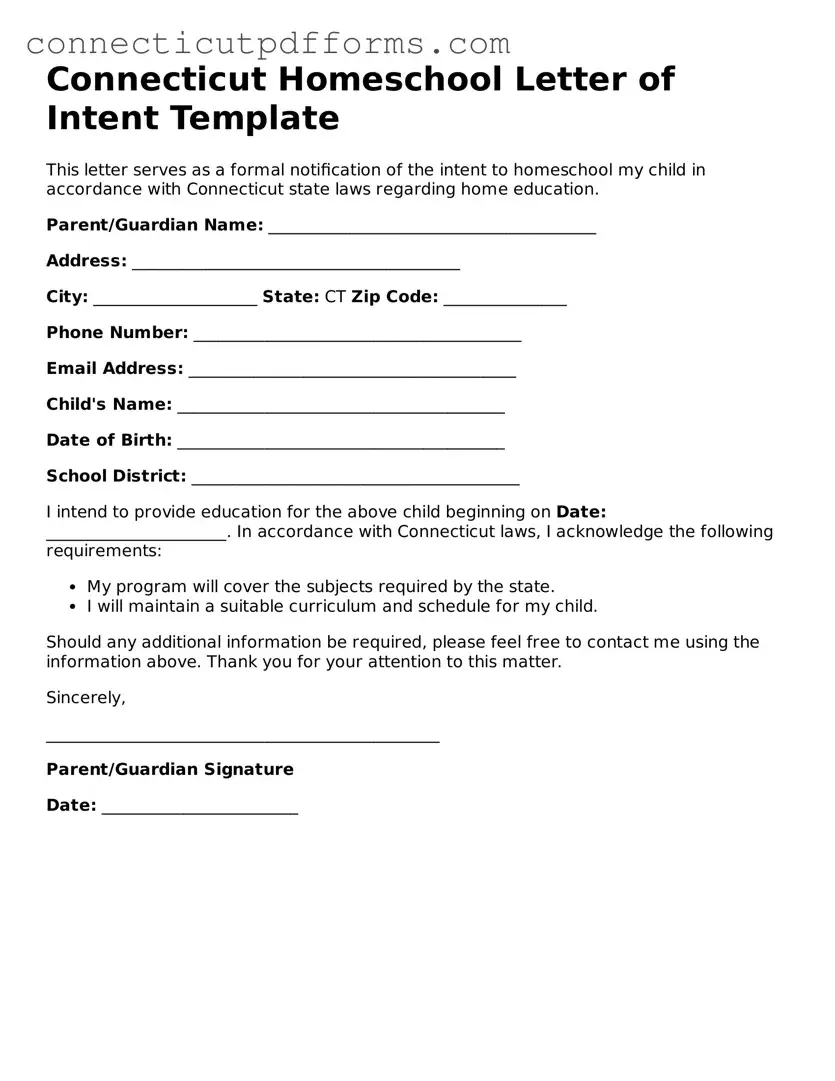Connecticut Homeschool Letter of Intent Template
This letter serves as a formal notification of the intent to homeschool my child in accordance with Connecticut state laws regarding home education.
Parent/Guardian Name: ________________________________________
Address: ________________________________________
City: ____________________ State: CT Zip Code: _______________
Phone Number: ________________________________________
Email Address: ________________________________________
Child's Name: ________________________________________
Date of Birth: ________________________________________
School District: ________________________________________
I intend to provide education for the above child beginning on Date: ______________________.
In accordance with Connecticut laws, I acknowledge the following requirements:
- My program will cover the subjects required by the state.
- I will maintain a suitable curriculum and schedule for my child.
Should any additional information be required, please feel free to contact me using the information above. Thank you for your attention to this matter.
Sincerely,
________________________________________________
Parent/Guardian Signature
Date: ________________________
